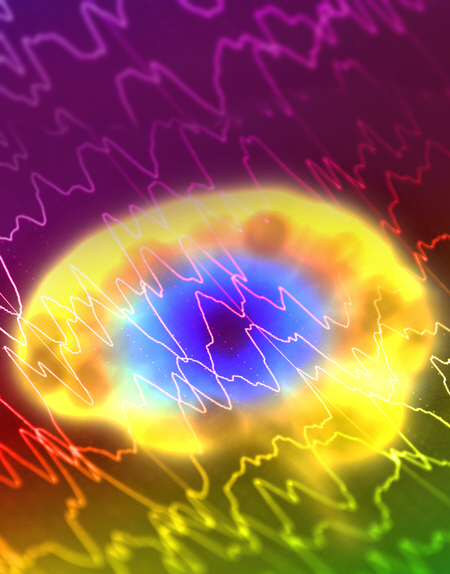 It’s how we settle the “chicken or the egg” problem…
It’s how we settle the “chicken or the egg” problem…
Emotions are complex and often interwoven… tangled up and bound to one another. That’s why it’s often difficult to sort out what’s causing what in the overall picture of your mental health.
Which one came first… the anxiety or the depression? Are you anxious about being depressed… or depressed about being anxious?
Often the only way to sort it out is by using diagnostic tests that help to dissect and untangle the twisted-up relationships of our emotions.
Diagnostic testing is appropriate for parents who are concerned with developing patterns in their child or who have been told there may be more going on than the misbehavior of youth.
School administrators or resource coordinators often recommend testing to help guide educational approaches and assigning of accommodations for the student.
We also conduct testing for adults who are experiencing symptoms that are increasing the disruption of daily function and want to clarify a path for finding help by identifying the nature of the difficulties.
 Quantitative Electroencephalography (QEEG)
Quantitative Electroencephalography (QEEG)
What is QEEG?
It’s a way to measure brain activity. Every thought, emotion, and sensation is produced by and results in electrical firing in the brain; and the QEEG displays that electrical activity nearly instantaneously. QEEGs are used not just to help evaluate physical conditions such as epilepsy, but they’re are also being used increasingly in the fields of mental and behavioral health.
The process of obtaining QEEG data is often referred to as brain mapping. A sophisticated piece of equipment takes raw data and performs a detailed set of statistical analyses to provide the clinician with very specific information regarding brain function.
One of the most important pieces of data provided is how the brain’s cortex (the outermost layer) coordinates activity. The cortex is the area of the brain that controls higher functions, such as thinking, deciding, and acting. If there is too much or too little activity, the QEEG will show it. In addition, it will show parts of the brain where coordination issues are present. Doctors and therapists can then use those results to target neurofeedback treatment in the most effective manner.
Why do a QEEG?
A brain map may not seem that important to most people, but for therapists it provides a goldmine of information. And the more accurate the assessment, the more efficient the treatment and the sooner clients begin to feel better.
For example, it can identify a certain pattern of activity that is causing a problem so that a neurofeedback program can be designed to address the issue. This is possible because the brain sends off electric waves that emit in predictable patterns and levels. When it’s discovered that a wave is outside the average range, it can be increased or decreased using repetitive activities involving feedback. It basically reconditions the brain to function at the desired level.
What it does it look like?
A QEEG test begins with an interview to get a general impression of the difficulties being experienced. Then, using sensitive, medical-grade equipment, 19 non-invasive sensors are placed on the head using a gentle, water-soluble gel.
Clients then simply put their attention on a focal point and remain in place while the system makes a recording of their brain waves. As they sit still, the provider instructs them to sit with their eyes open or closed for short periods allowing the system to analyze the response of their brain to visual input. Following the test, the client easily wipes the gel from their head.
Some clients report immediate changes in the clarity of their thinking or calmness of their inner thoughts.
The electronic recording is then sent to a third party, who has no knowledge of the client’s complaints, for a full analysis and report of findings. The report of findings is received in two-three weeks and outlines suggested training approaches suitable for the client. The suggestions are compared to the complaints of the client and adjusted to achieve the greatest results as efficiently as possible.
Once the findings are received, the training can begin with sessions lasting 30-45 minutes. Generally, less sensors are used during session to target the areas to be addressed. It’s recommended that training is repeated at least twice per week for approximately 40 sessions. A number of sessions is necessary because habituation generally occurs after more than 21 sessions, and additional sessions are needed to condition the brain to function in the desired range without conscious effort.
 Psychological Testing
Psychological Testing
What is psychological testing?
Also known as psychological assessment, psychological testing focuses on psychological and/or emotional symptoms that disrupt an individual’s life – like bipolar disorder, anxiety, depression, and others mental health concerns.
The testing process often uses several different sources, including clinical interviews exploring various common symptoms and their contributors, behavioral observations to assess potential social or physical manifestations of the complaints, and personality questionnaires used to determine expected contributors to coping and reaction styles. In clinical interviews, the client records answers on paper or on a computer.
Why consider psychological testing?
The process provides a comprehensive picture of a patient, so the best treatment plan can be chosen.
Many complaints negatively affecting performance at school or work can be determined through psychological testing. For example, if a child is having problems in class, tests will help reveal if the difficulty is related to conditions such as ADD/ADHD or learning disabilities. For adults it’s not uncommon for anxiety or depression to be revealed in the changes in their social or relationship behaviors.
Psychological tests are vital to inform therapists and patients alike. Providers use them to determine how to best treat their clients, and clients learn about themselves and the sources of their behavior.
What it does it look like?
There are some circumstances in which a provider may include other family members or people important to the client to gain a better understanding of the client’s life.
The process includes interviews with a provider, a selection of tests that, when administered, can take 4-6 hours over multiple sessions, and a comprehensive report including a treatment plan. The types and styles of test vary widely, and the variety allows the provider to customize the group of tests to fit the needs and complaints of the client.
Once the testing and interviews are complete, extensive reports are completed detailing and exploring the implications and application of the test to the complaints of the client and treatment plan.
Testing you can get a deeper and more accurate glimpse into your personality…
…and the reasons why you think and act the way you do.
This process reveals aspects of you that would otherwise never be known. If you’ve ever wondered or been told that something may be going on with you, then get the answers once and for all. Have the tests done and know your truth.
Regardless of the results, you’ll be able to move toward your goals equipped with information from proven analysis.
Don’t wait to get to know yourself; call today for a free 20-minute phone consultation to learn more: (630) 358-9821.

